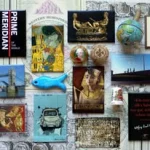To be exact, I have to say, the very first Buddha I had met in Sri Lanka was the one at the airport of Colombo. He was sitting in the airport hall with crossed legs and with the tips of the thumb and index finger of his right hand touching and forming a circle. He looked quite artificial, like a big doll in a long, yellow nightshirt sitting on a pink cake. He was observing the airport bustle from his half-closed eyelids and smiling a little bit at the same time.
After various checks, we moved towards the baggage carousel. A suitcase with its belly opened was riding on it. My suitcase! I ran to an airport employee and hysterically showed him what had happened. The man – with the peace of the great Buddha – asked if I had a key. Sure I had, even two keys in case I would lose one of them. But of course, in the panic, I could not find any of them. When I finally took one key out of my cabin luggage, we unlocked the small padlock and first, the guy pulled the zipper back into the starting position and then he zipped the suitcase again. He was absolutely relaxed about it. Do not lose your nerve and do not be angry – just reject extremes and find the middle way. I still have a lot to learn! And I am sure that at that moment the enigmatic smile of the Buddha in the neighbouring hall grew a little bit bigger.
The suitcase was fine. Just somebody who was very curious tried to open it and after that did not manage to close it back. Nothing was missing. And even if it was, then it must have been something of no use because I did not miss it at all…
The road to Dambulla was lined with stalls with various articles – plastic buckets, brooms, car parts, toys, clothing… Sometimes, there wasn‘t even a stall, just a cord stretched between two trees and trousers for sale hanging on it. We also passed kiosks with fruits. Well, we could identify pineapples and papayas easily. But I was fascinated by bunches of beautiful, big yellow fruits.
Was it a coconut or was it not a coconut? It was a coconut! Even a king coconut! Or “thambili” as they call it here in Sri Lanka. We stopped by a woman who was selling them.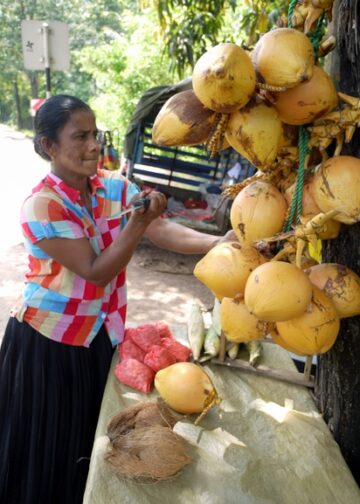
The woman chopped off the top of the nut with an energetic swing of a machete. Then she made a smaller hole in the coconut with the spike and some juice spurted out. The woman stuck a straw into it and handed this drink in its natural container to me as she would hand some important award.
 One day later, we made an experiment and poured juice from a coconut into glasses just to see how much it is. And it was about 4 dcl! The juice is neither sweet nor unsweet, just exactly right. It contains all minerals you lose if you sweat a lot. And that was what we needed because the moment we got out of our air-conditioned car, everything stuck to our bodies. After we had finished drinking, the woman chopped a small piece of the peel and cut the coconut in half. We used the piece instead of a spoon and scraped out the light pulp. The riper the nut, the tastier the pulp.
One day later, we made an experiment and poured juice from a coconut into glasses just to see how much it is. And it was about 4 dcl! The juice is neither sweet nor unsweet, just exactly right. It contains all minerals you lose if you sweat a lot. And that was what we needed because the moment we got out of our air-conditioned car, everything stuck to our bodies. After we had finished drinking, the woman chopped a small piece of the peel and cut the coconut in half. We used the piece instead of a spoon and scraped out the light pulp. The riper the nut, the tastier the pulp.
After a while, a tuk-tuk stopped also by but the man did not want to buy coconuts, he was interested in tidily folded papers with some formulas written on them. Well, the man did not want to do any mathematical homework, he just wanted to buy the content of those small packets – betel leaves – a drug chewed by many local people. The man had his teeth and tongue already dyed red.
Dambulla is an important transport junction and the center of the vegetable distribution. However, the main attraction are the cave temples Raja Maha Vihara, the largest and best-preserved complex in Sri Lanka, since 1991 on the UNESCO heritage list.
We were welcomed by a monkey family. A young with its mother approached us. When we started to take pictures of them drinking water, the male rushed to us and made not very friendly faces.
While climbing up the steps to the temple, the sky became overcast and when we were just close to the top, it started raining. It was not necessary to put on the raincoat, the sweat-drenched clothing had already stuck to our bodies. At the entrance, we were obliged to put off our shoes and put them to the “Shoes Care Service” for a fee. If you left your shoes just anywhere, you would risk them being stolen by the angry male or some other monkey.
It rained just for a short time. The stony pavement had not gotten cold yet, when we walked on it barefooted, we found it pleasantly refreshing. There are five caves under the vast rock overhang. We could see a drip line carved along the rock. It helps to keep the interiors dry.
One or two caves had probably existed already in prehistoric times. Buddhist monks lived here. In the 1st century BC, after the invasion of South Indian usurpers, king Vattagamani Abhaya found refuge here among the monks in the caves. 15 years later, after he again regained control over his kingdom, he rebuilt his former hiding place into magnificent temples as his thanksgiving to the monks. Even his successors regularly added some statues or wall paintings to the decoration of the temple – like king Nissanka Malla who gilded 50 statues. The paintings depict different events from the Siddhártha Gautama Buddha’s life, his temptation by the demon Mara, but there are also some important scenes from the country’s history.
Almost the whole interior of the first cave is filled up with a statue of a lying Buddha with a length of 14 m, sculpted directly out of the rock. His big toes are not on one level which means that the Buddha reached the final aim – the liberation from suffering and rebirths – nirvana – stilling of the flames of passion and desire. His feet are painted with flowers, maybe a memory of his birth when he made his first steps and lotus flowers blossomed in his footprints.
On the right side of Buddha’s feet, there is his favourite pupil Ananda.
The second cave is the largest one (52 m long and 23 m deep) with almost 60 statues. Looking at them I was thinking about the statues in Egyptian temples – both types of statues were stiff, without any characteristic features. All the statues looked almost the same. But this is not an accident – Buddha’s sculptures – their proportions, attributes and gestures – have to be formed according to fixed rules.
There are 153 Buddha statues in the caves – in various poses. We could see Buddha lying, standing and also sitting – mostly with his hands in his lap, palms facing up while the right hand rests in his left hand. This hand position (mudra) is a gesture of full balance and meditation.
A cobra with three heads stretched above a Buddha’s meditating figure. It protects him against wind and rain.
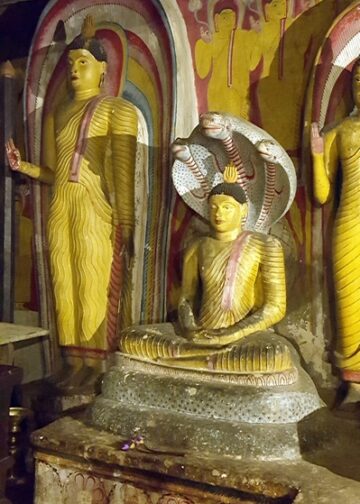 All the statues have elongated earlobes. Some scientists say they symbolize the ability of absolute listening and perceiving, the others pointed out that Buddha was born and lived the first part of his life as a prince and only rich and noble people were allowed to wear jewels. I again thought about Egyptian pharaohs and the big holes in their ears that fit the huge and heavy golden earrings. What kind of earring it has to be, to be able to elongate the earlobes in that way?
All the statues have elongated earlobes. Some scientists say they symbolize the ability of absolute listening and perceiving, the others pointed out that Buddha was born and lived the first part of his life as a prince and only rich and noble people were allowed to wear jewels. I again thought about Egyptian pharaohs and the big holes in their ears that fit the huge and heavy golden earrings. What kind of earring it has to be, to be able to elongate the earlobes in that way?
In addition to the Buddha’s statues, there are also some sculptures of Hindu gods and even of some kings.
As if the statues were not enough, there are also Buddha’s pictures on the walls. Some say there are 1,500 paintings of Buddha in one of the caves only!
But there are also some geometrical patterns.
In one cave, water was dripping out of a crack in the ceiling. It is said to have healing powers and it is used for ritual washing. The spring does not dry out even during dry months.
At the exit, three boys were sitting there, two of them in orange monk robes, the third one – obviously the leader of the trio – in a shirt and jeans.
They were a little bit shy when we offered them some lollipops and after that, they ran away with a dog to nearby rocks. The orange robes shined on the dark background like happy fire flames. We could still see them. And also the silhouettes of some monkeys on the contours of the huge rock.
While descending to the Golden Temple, which is an important educational institution of modern Buddhism, the sky got almost dark. A huge golden Buddha was sitting above the temple, the tips of the thumb and index finger of his right hand touched and formed a circle – the same way as the Buddha at the airport. It is a gesture of discussion and transmission of Buddhist principles. A class was coming here, young boys and girls in white uniforms were a nice diversification of the thickening darkness.
There was also a stupa in the areal. According to a legend, when Buddha was asked how his monument should look like, he folded up his robe, put an alms bowl on it upside down and placed a sunshade on the top. Look at this cult building and you will find all those elements on it.
But before we went down from the rock caves to the Golden Temple, we enjoyed an amazing view of the endless jungle landscape. The sky looked as if somebody had made some dark drawings with a brush. The whole picture was dominated by an illuminated cloud that was rising above a strangely formed rock, about 20 km far away from us. Sigiriya! Our next challenge. A challenge high in the sky…
If you want to know more about the Golden Temple, you will find more information here. There are also virtual tours of the caves.
Text: © Copyright Ingrid, Travelpotpourri
Photos: © Copyright Ingrid, Travelpotpourri
Sri Lanka

 TRAVEL
TRAVEL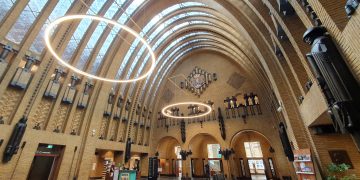
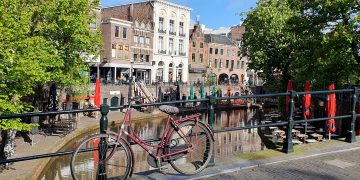
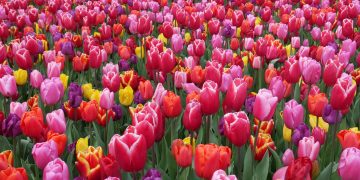

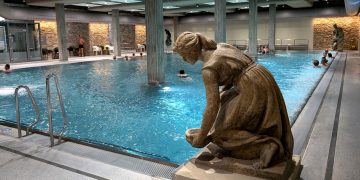
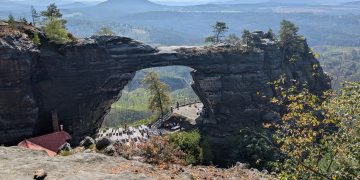
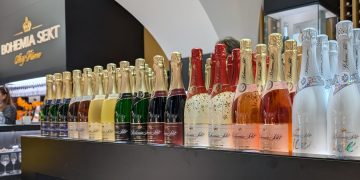
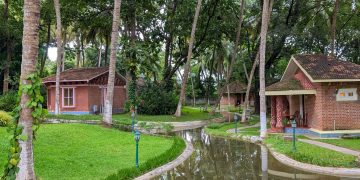
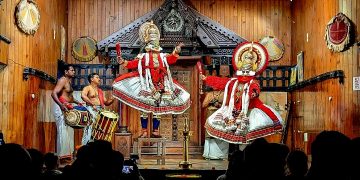
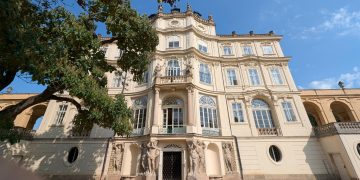
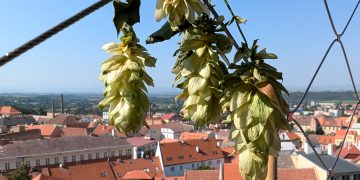

 RECIPES WITH A STORY
RECIPES WITH A STORY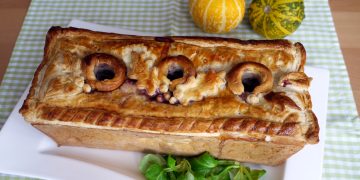
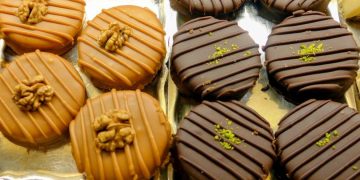
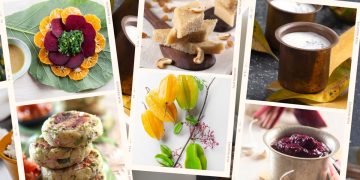
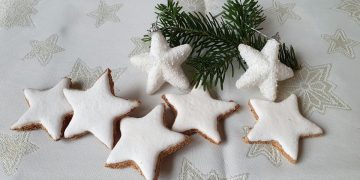
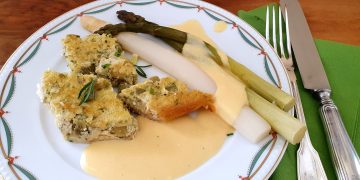

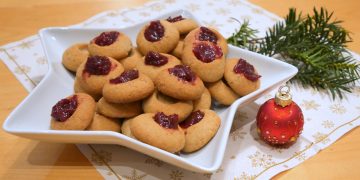
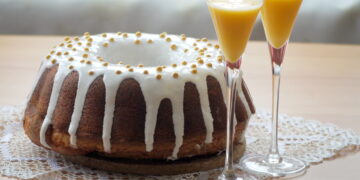
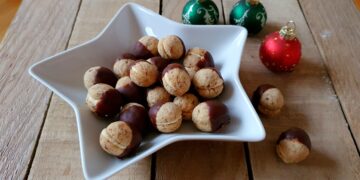

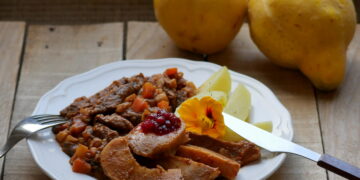
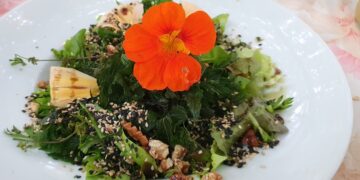
 AUSTRIA-VIENNA
AUSTRIA-VIENNA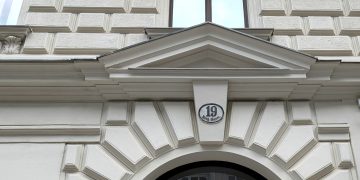
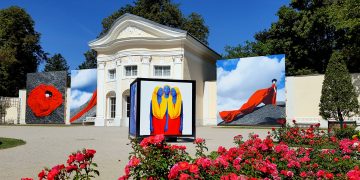
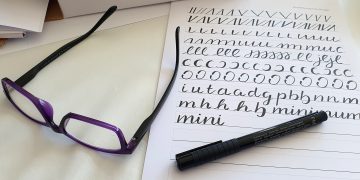
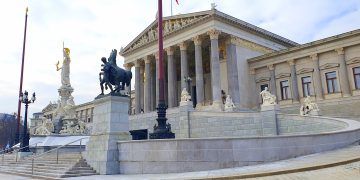
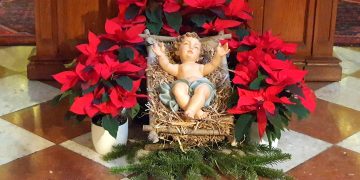
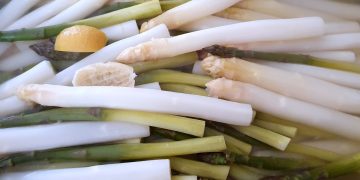
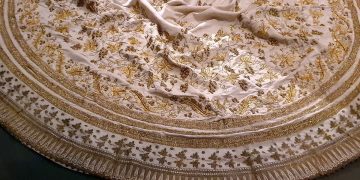
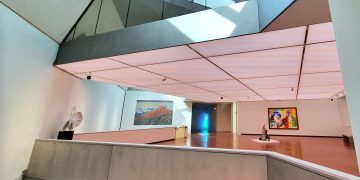
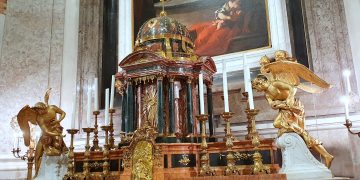
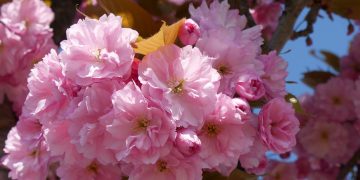
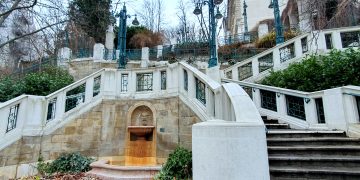

 SLOVAKIA-BRATISLAVA
SLOVAKIA-BRATISLAVA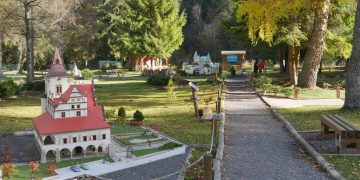
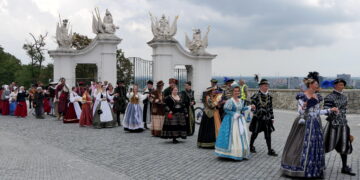

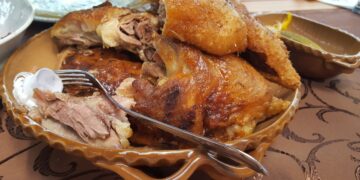
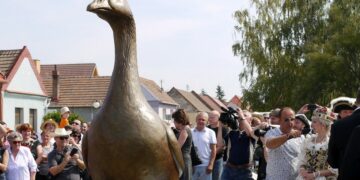
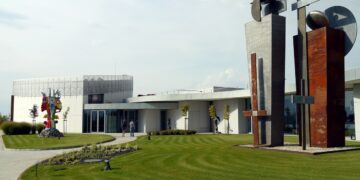
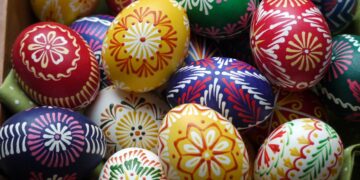
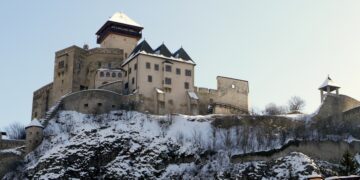
 EVENTS
EVENTS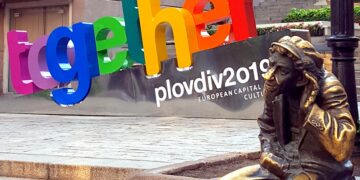
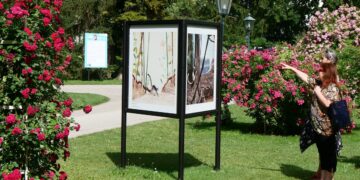
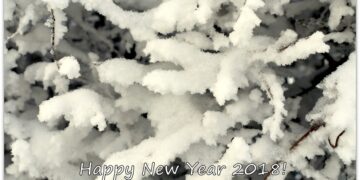
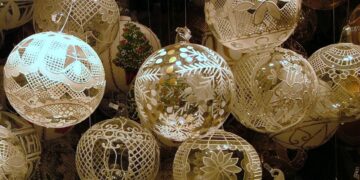
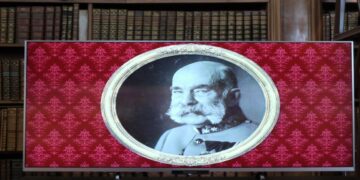
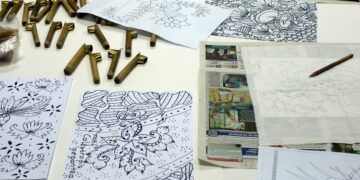
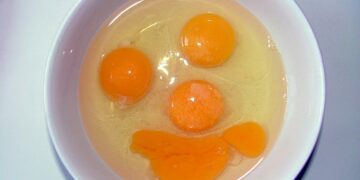
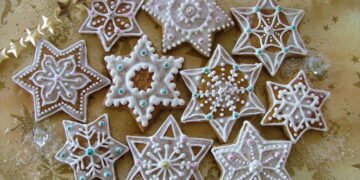
 INTERVIEWS
INTERVIEWS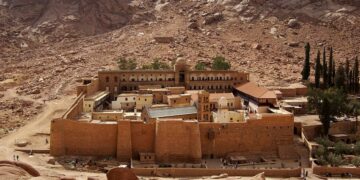
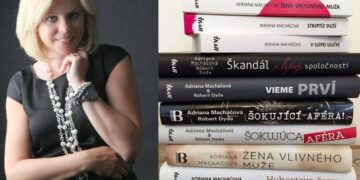

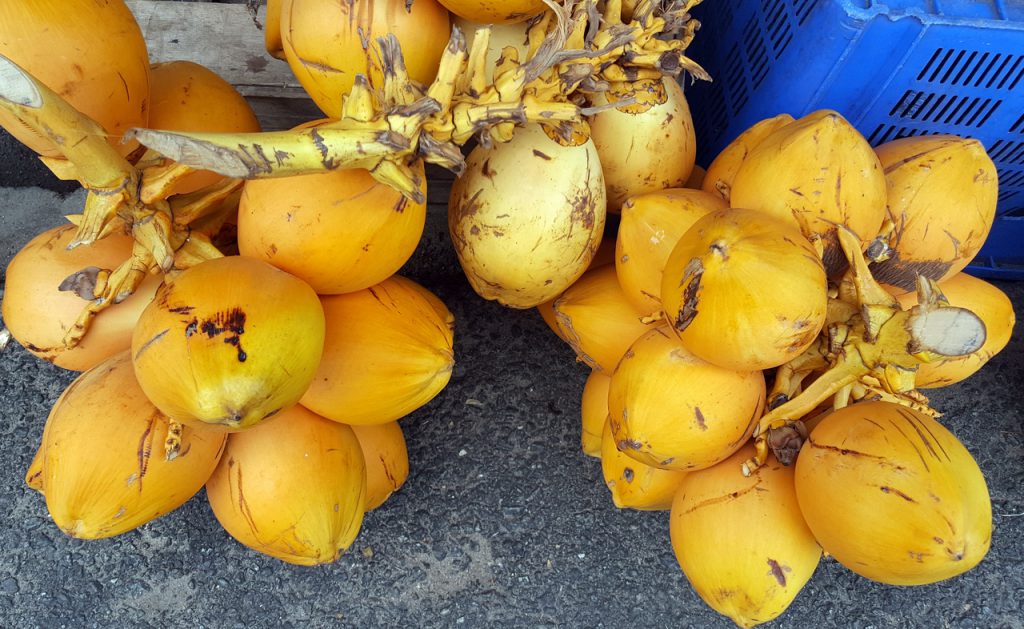
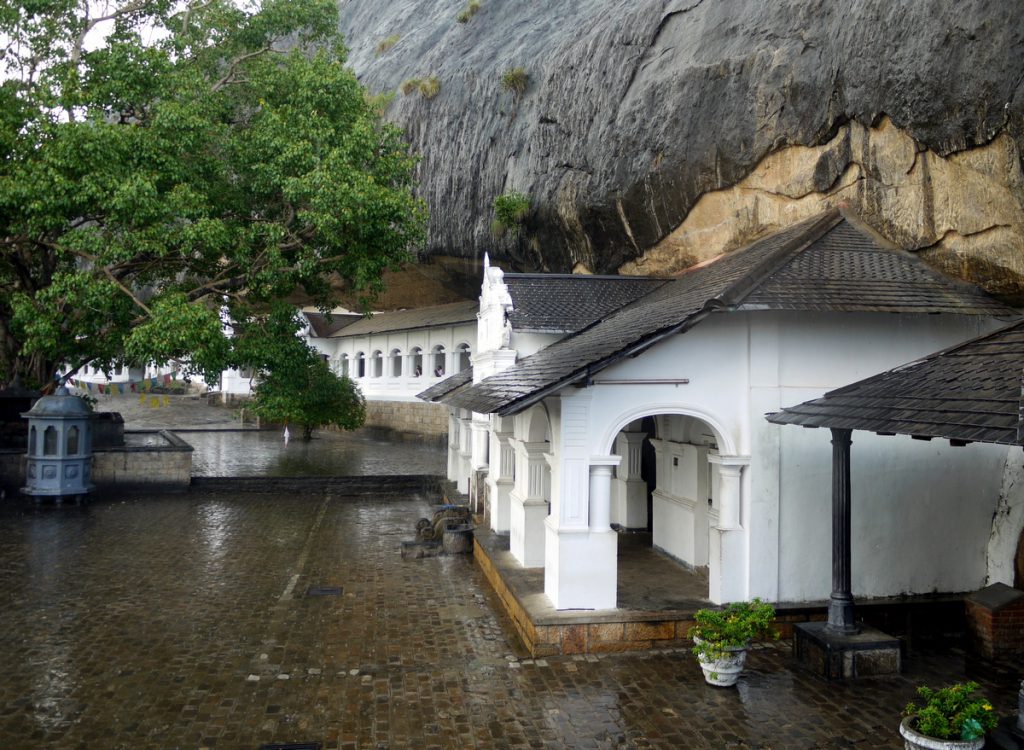

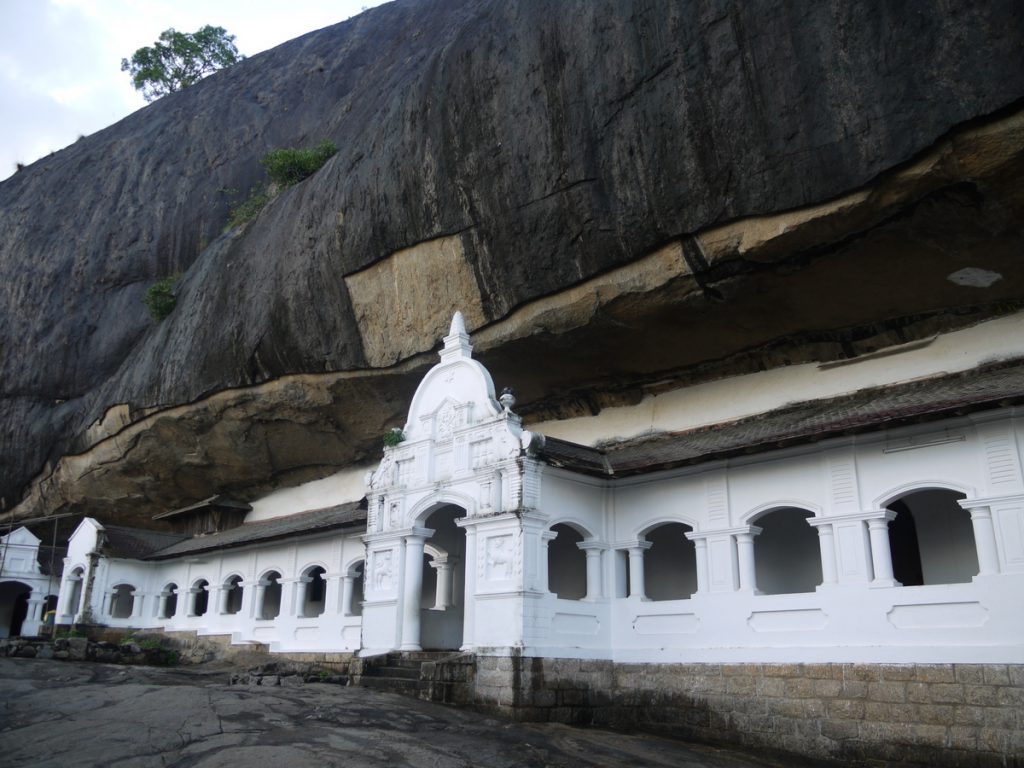
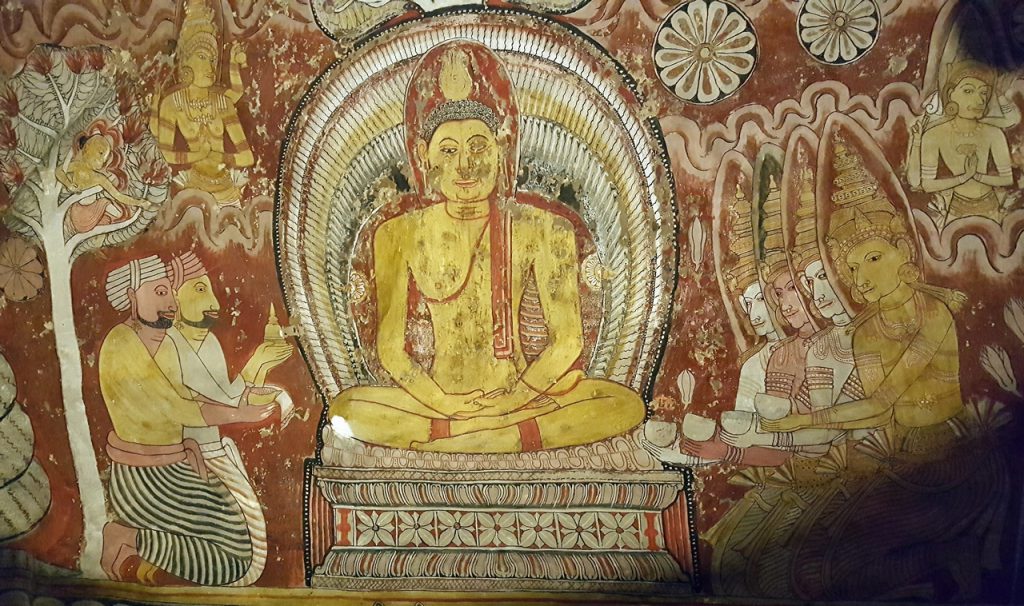
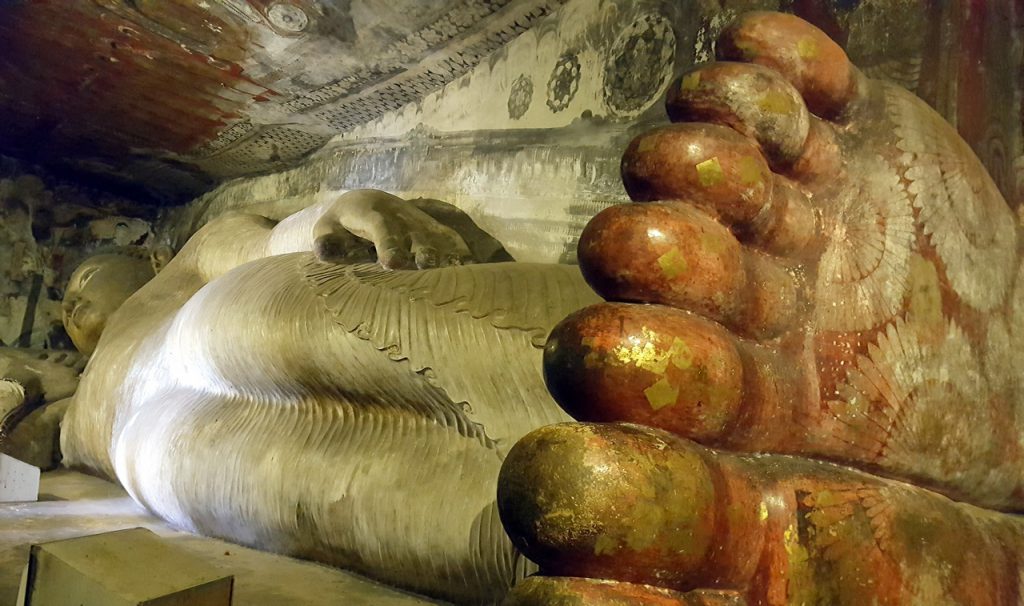
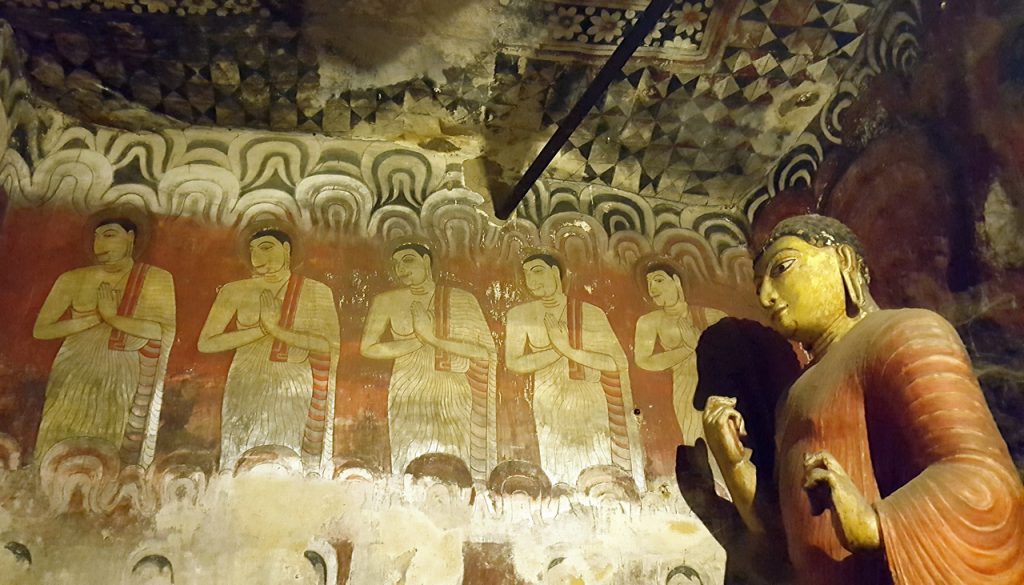
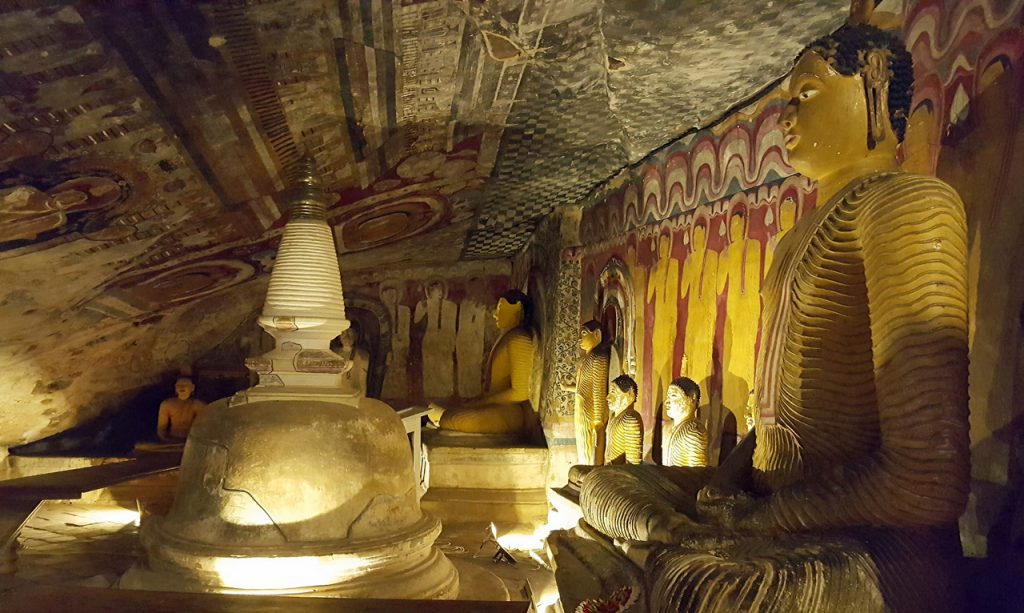
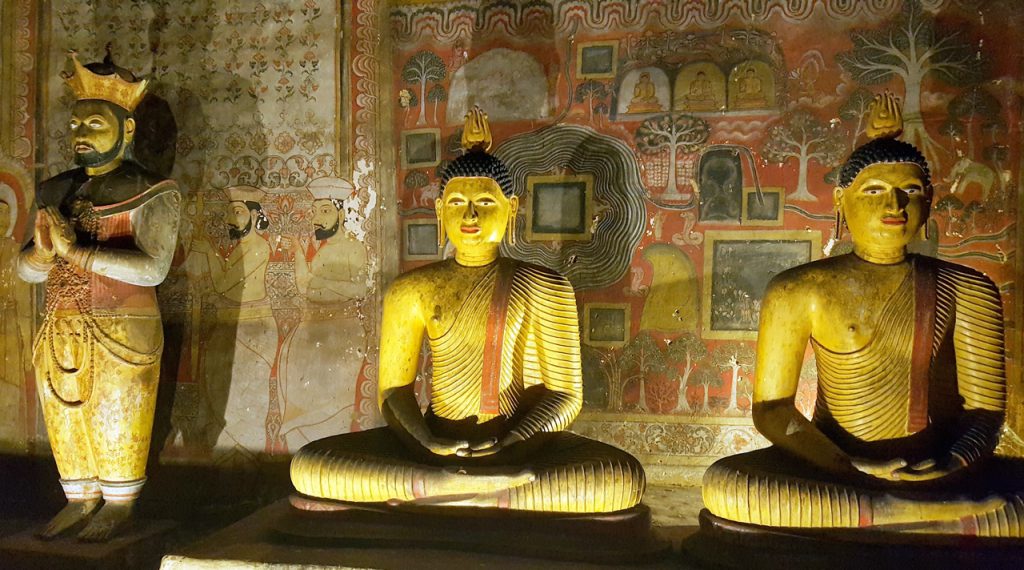
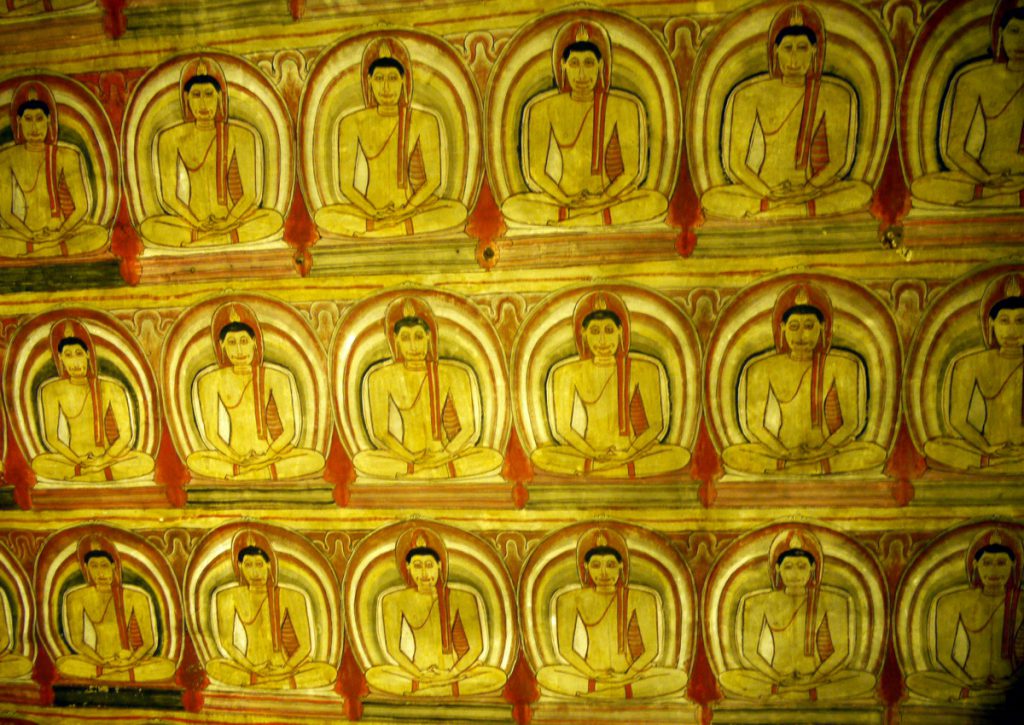
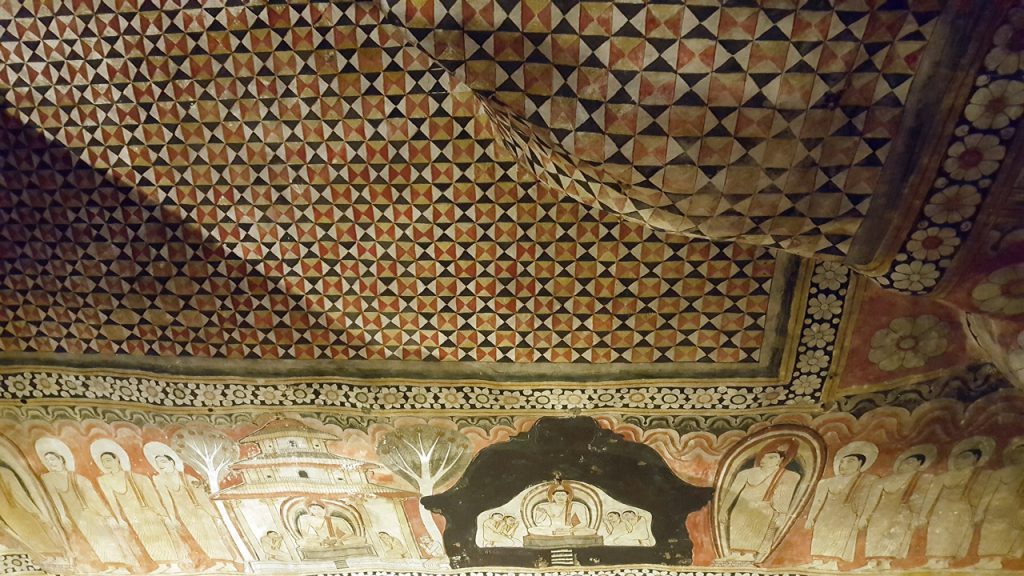

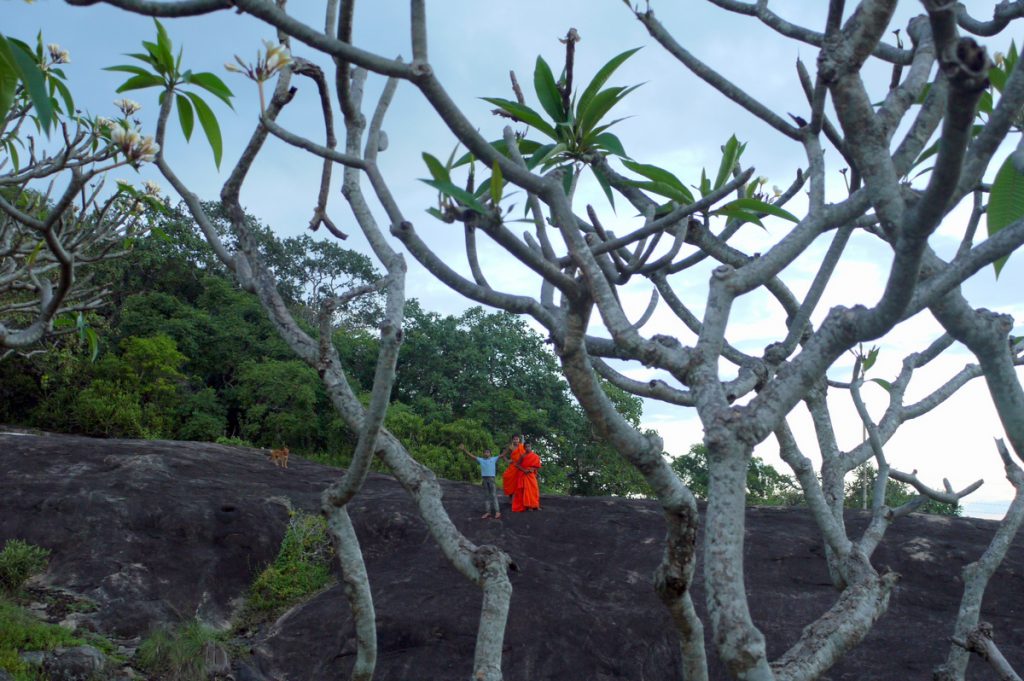

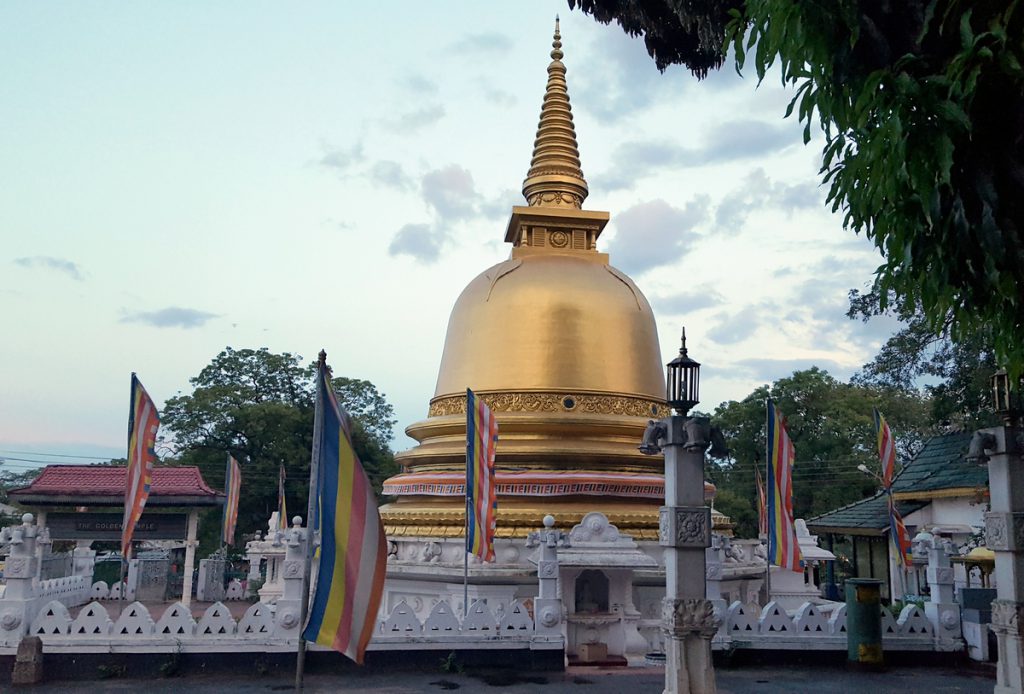
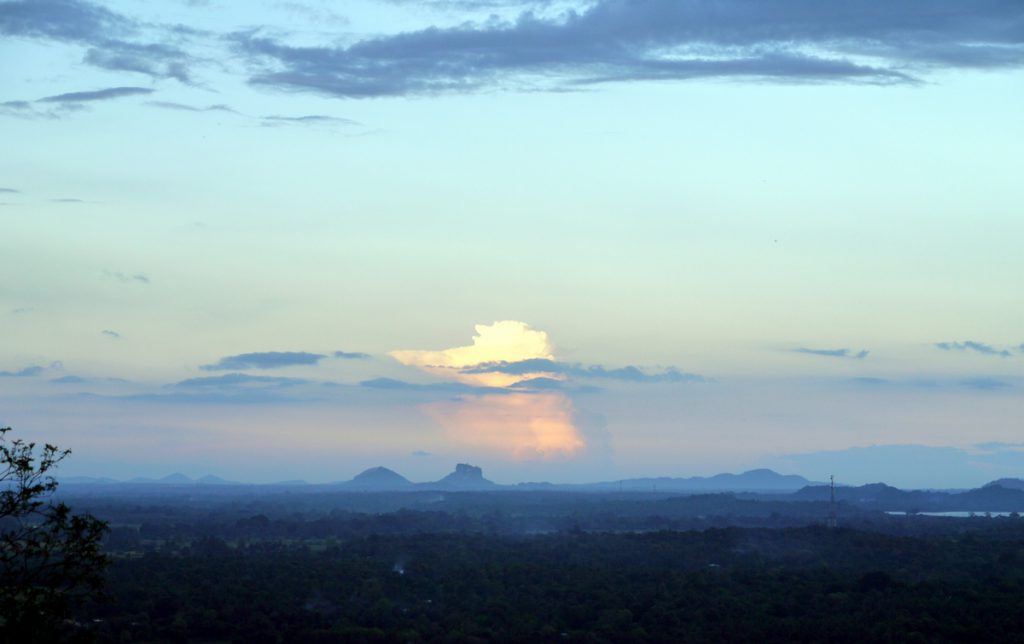
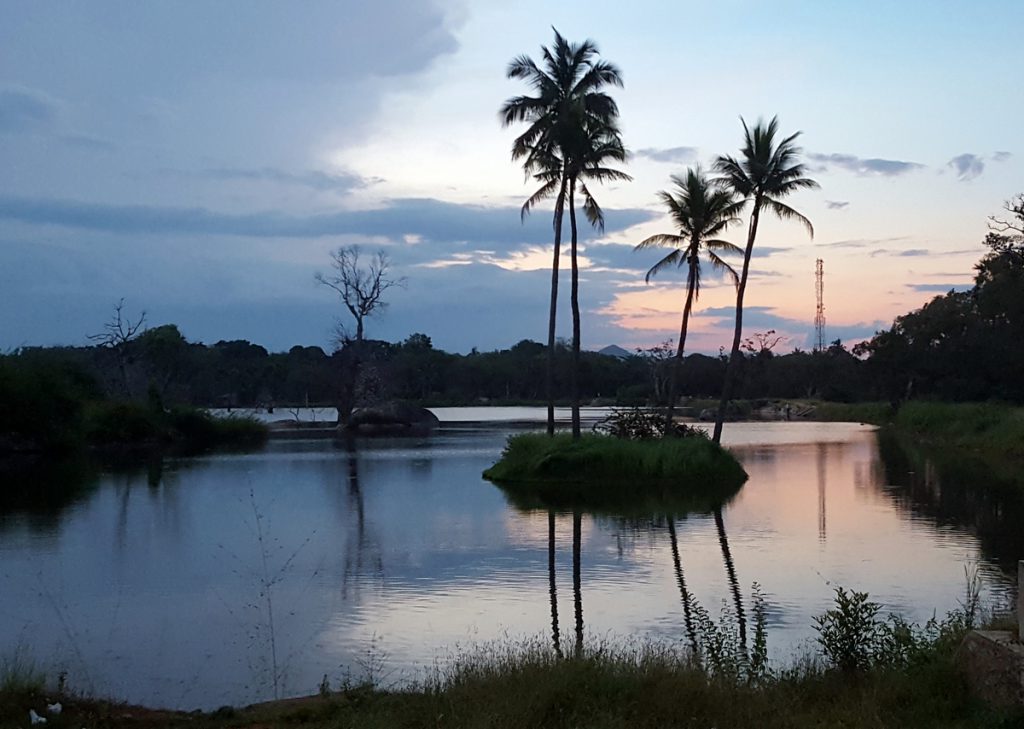





 Herzegovina – Where to Go If…
Herzegovina – Where to Go If… Sigiriya – The Royal Residence in the Sky
Sigiriya – The Royal Residence in the Sky

